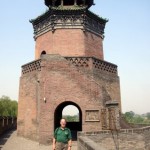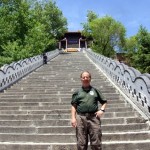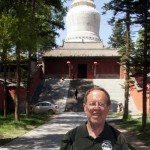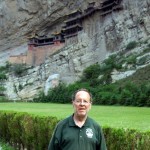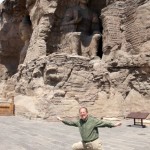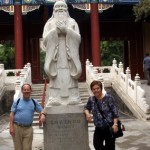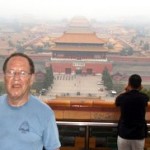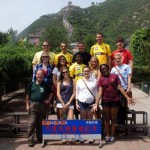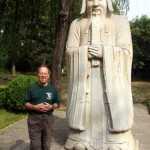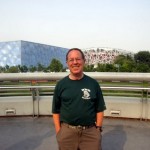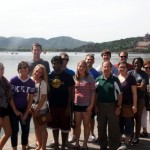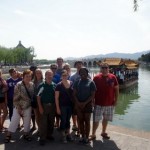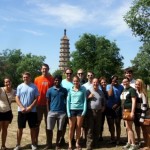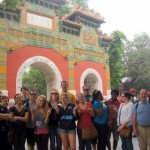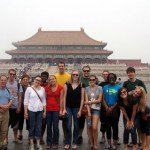Jakarta
If you’ve ever wondered where a day went, there’s an easy answer if you are flying west—and a long distance. I lost January 1, partly because I spent 32 hours getting to Jakarta; and in crossing the dateline, lost a day (that I’ll get back when I return). The result was I missed the games that I wanted to see, but since they came out wrong, it’s just as well that all I could do was read about them online.
I’m in Jakarta, the capital of the largest country no one knows much about— Indonesia’s population is around 250 million, about 10 million of whom are jostling with me for space on the streets of the capital. It is about 85% Muslim, but describes itself as a Muslim-majority country, not a Muslim country like Malaysia. The laws are secular; for example, alcohol is available.
As I remembered from the only other time I was here (1997), Jakarta was born under the Dutch, who ruled from the 18th century—as I recall, the British exchanged Bencoolen for Malacca in the aftermath of the Napoleonic wars—until after World War II; the Indonesians declared independence in 1945, the Dutch waged a bitter war of reconquest until 1949, but recently acknowledged that the civil war was officially over in 1945). Jakarta has broad streets, lots of skyscrapers, and the juxtaposition of those skyscrapers with shacks and shanties that is typical of most developing countries. As an example, there’s a gaping unfinished project out my window—one that may never be finished.
On our site visit to the U.S. consular service today, we had a panel that brought me up to date on what happened here after 1997, when the Asian economies collapsed (the rupiah dropped to 1/6th of its pre-crisis value). The Suharto dynasty had just been toppled. In fact, there were folks who described Indonesia as potentially an “Asian Yugoslavia”—a potential candidate to fracture; even today, of the thousands of islands that comprise the archipelago, Java (with 60% of the population) and Sumatra (with almost 2O) constitute the two most important islands—the country spans almost 2,000 miles. At least the rebellious province of Aceh negotiated a truce a few years ago, and that was one of the last holdouts for separation.
In terms of the economy, today, Indonesia seems to have escaped the current downturn. After the economy tanked in 1997, and got bailed out by the International Monetary Fund, growth has been steady at 6-8% for the past decade. Part of the stimulus comes from the rest of Asia, which hungers for the commodities (oil, gas, palm oil, etc.) that are so well distributed here. Trade has come more from the region than from the U.S.; U.S. trade with Indonesia is about $10b, which is less than U.S. trade with the 6 million people in Singapore. Interestingly, one area where the U.S. has made an impact is in aviation; Lion Air recently signed the largest Boeing contract ever! Part of the stimulus came from cleaning up the financial structure—the banks got slapped, and the kind of mortgage repackaging that almost toppled US banks barely tickled Indonesia. The upshot is that the per capita has reached something close to $4,000.
I was here for the first election in Indonesia since the Suharto family came to power. It was hard to see where it would go at the time. The military had been a force in politics (partly the residue of that civil war in the late ’40s). What happened is that Indonesia has become the 3rd largest democracy in the world. Subordinating the military for defense rather than king-making in politics has put Indonesia in position to set an example and give advice to Burma and Egypt and the other “spring revolutions” in the Middle East. The local provinces, where a lot of the commodity trade has taken place, have also developed democratic institutions.
The State Department (and Commerce) speakers did point out some of the problems—the rampant corruption (an article in the Wall Street Journal this morning reported that 33% of the respondents thought they would have to bribe the police or the government officials); the lack of a successor to the current president, which has led to a lot of “playing to the crowds” for the election next year—and that has meant a lot of laws for protection of domestic businesses. One area they pointed out was laws against franchises—all franchises, not just American ones, perhaps an effort to slow the trend from traditional markets to more modern ones.
In the afternoon, though, we went to one of the “modern markets”, a six-story mall typical of what I’ve seen in Asia, and one that makes me wonder whether I’m in a developing country. It had all the stores one would find in an upscale mall in the U.S.—but much better food. Did I say I love eating here? The reason we were at the mall was to visit the equivalent of the U.S. information agency—a cultural diplomatic outreach that is the only one of its kind in the world. It’s in a mall because the target market is Indonesians 15-30, and the venture is a public-private venue cosponsored by some of America’s best known brands—Apple, Google, and Microsoft. The brainchild of a former U.S. Ambassador to Indonesia, atAmerica (or @America) is a high-tech (and high-security) museum/exhibit hall/entertainment center. According to the director, they hosted 50,000 students and 260,000 visitors at 1,300 events, including rock concerts, comic book groups, etc. A far cry from the days when Voice of America broadcast the truth across the Iron Curtain! With 60% of the Indonesian population under 30, that group might well be one worth reaching. And like all “best practices” I can only wonder why this model isn’t being duplicated around the world. It’s a lot more attractive, I would think, than the old U.S. information libraries that attempt to win friends and influence people.
I’m glad I did not lose THIS day! Did I mention I love the food?


